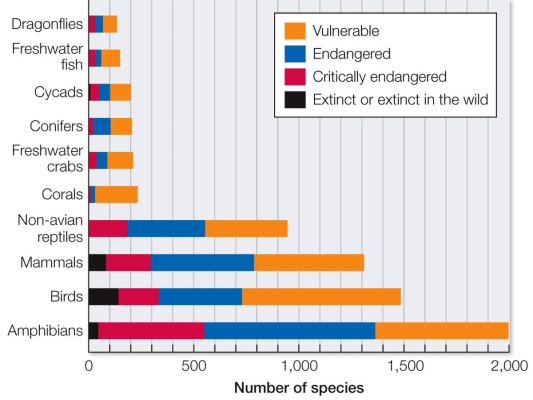Refer to the graph.  So far, the IUCN has assessed more than 76,000 species, but there are at least 8.7 million species on Earth (probably more) , and most of them are invertebrates.Few plants and invertebrates have been assessed.Their list of at-risk organisms is heavily skewed toward vertebrates, which are larger and easier to measure.Given this knowledge, what is the most reasonable conclusion that can be drawn regarding the at-risk groups shown on the graph?
So far, the IUCN has assessed more than 76,000 species, but there are at least 8.7 million species on Earth (probably more) , and most of them are invertebrates.Few plants and invertebrates have been assessed.Their list of at-risk organisms is heavily skewed toward vertebrates, which are larger and easier to measure.Given this knowledge, what is the most reasonable conclusion that can be drawn regarding the at-risk groups shown on the graph?
Definitions:
Q1: Coral reefs and algal beds have a
Q27: Refer to the figure. <img src="https://d2lvgg3v3hfg70.cloudfront.net/TB5650/.jpg" alt="Refer
Q38: Following a dermal puncture, the phlebotomist should
Q48: The technique used to collect sweat electrolytes
Q70: The oxygen produced by photosynthesis is considered
Q96: Which of these animals would likely have
Q118: The microspecimen collection container that would hold
Q147: Prairie potholes are small, shallow lakes in
Q155: The wolves in Yellowstone National Park exert
Q163: In Southern California, scientists watched 15 culverts